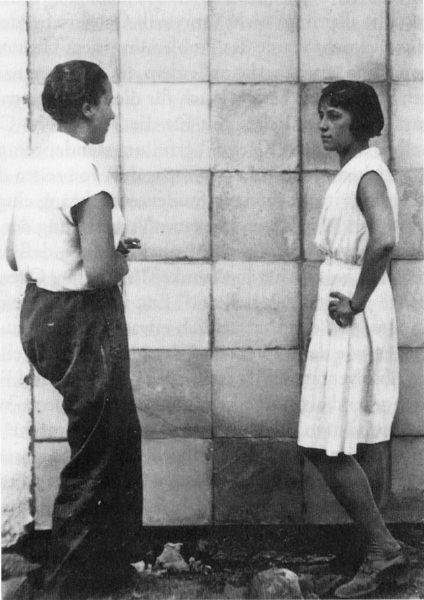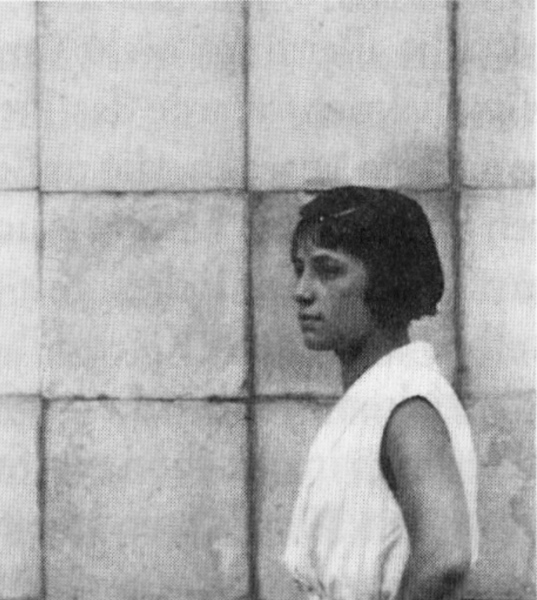
Biography
Lionore Hermine Perin, was born in Vienna as the daughter of the lawyer René Perin on 27 February 1912. Her sister Theodora was born two years later. After completing elementary school at the Teacher Training College in Vienna 1, Hegelgasse, Lionore attended the humanistic department of the Girls’ High School in Vienna 6, Rahlgasse 4, where she graduated on 23 June 1930.
In October 1930, she enrolled as a student at the Technische Hochschule Wien (Technical University Vienna University) for Architecture and passed the I. state exam on 27 October 1932 and the II. state exam on 12 July 1934.
After her studies, Lionore Perin first went abroad to gain professional experience. From 1934-1935 she was employed as an architectural assistant in the studio of the architect Arnold Itten in Thun, Switzerland. During this time, she attended lectures on economics at the Law Faculty of the University in Bern.
After a year abroad, she returned to Vienna and enrolled once again at the Technische Hochschule Wien – but this time for the Master School of the Faculty of Architecture with Prof. Karl Holey.
In the academic year 1935/36, only one other woman was admitted to Karl Holey’s master school besides Lionore Perin, Erna Kapinus, who, however, dropped out after a short time. In her master school thesis ‘Umgestaltung der Umgebung der Kirche Maria am Gestade’ (‘Redesign of the surroundings of the church Maria am Gestade’), Lionore dealt with the current problem of redevelopment construction in the area of Vienna’s inner city in the mid-1930s. ‘Assanierungsbau’ was the comprehensive improvement of buildings for hygienic, social, technical or traffic-related reasons.
She completed it after only two semesters. The design she worked out in it was the basis for her dissertation, submitted a little later, entitled: ‘Untersuchungen über städtebauliche Probleme insonderheit der Assanierungen’ (‘Studies of urban development problems, especially redevelopment’). As part of her dissertation, she made 87 hand-drawn sketches, with the core of her work being redevelopment plans of individual neighbourhoods. London slums were also covered in her dissertation, as she travelled to England in the summer of 1936 and worked for the then London-based Viennese architect Michael Rosenauer. During this time, she took the opportunity to attend lectures and tutorials at the Architectural Association, School of Planning and Research for National Development in London. She was interested in lectures on planning economics, building codes, urban surveying, planning statistics and urban planning. Lionore Perin graduated on 16 December 1936 and was the third woman to earn a Doctor of Engineering Science degree from the Technische Hochschule.
She worked for Michael Rosenauer in London for a total of one year before finally returning home to Vienna in the summer of 1937.
Back home in Vienna, she took part in a competition for an orphanage in Athens and in a competition for Grinzinger Strasse, which, however, did not achieve any external success. At the beginning of November 1937, she found employment with the construction firm Hofman & Maculan, where she worked as a construction manager until the end of March 1946.
On 26 July 1946, she obtained the license of an architect, which she changed to one for building construction in the same year. During a joint project in Lower Austria, she met the civil engineer Friedrich Regnier, who was then working for the Verbundgesellschaft. They married in June 1951 and a year later had their son, Thomas.
As an independent architect, Lionore Regnier, as she called herself after her marriage, was instrumental in the reconstruction of Vienna and planned several post-war housing developments. She carried out a number of building projects together with her husband and took part in several competitions. She died after a serious illness on 19 October 1970, at the age of only 58.
A research report on Rudolf Maculan is available from a research group that was commissioned by the City of Vienna from 2011 to 2013 to investigate the historical significance of those personalities after whom Viennese streets were named.
Works (selection)
1937 Competition for a girls’ orphanage in Athens
1937 Competition for Grinzing
1952-1953 Housing complex of the city of Vienna, Badgasse 10, 1090 Vienna
1955-1957 Housing complex of the city of Vienna, Gschwandnergasse 53-57,1170 Vienna (with Friedrich Hintermayr)
1963-1965 Housing complex of the city of Vienna, Marktgasse 19, 1090 Vienna
1969-1970 Housing complex of the city of Vienna, Margaretenstraße 40, 1050 Vienna
1969-1971 Housing complex of the city of Vienna, Schönbrunner Strasse 181-183, 1120
Vienna
o.J Competition for Bundsrealgymnasium in Eisenstadt
o.J Competition for the office building in Lerchenfelderstraße
Sources
Juliane Mikoletzky, Ute Georgeacopol-Winischhofer, Margit Pohl: „Dem Zuge der Zeit entsprechend …“ Zur Geschichte des Frauenstudiums in Österreich am Beispiel der Technischen Universität Wien, WUV-Universitätsverlag Wien, 1997.
Kammer der ZiviltechnikerInnen | ArchitektInnen und IngenieurInnen Wien. Niederösterreich. Burgenland., Sammelakt Lionore Regnier
Sabine Plakolm-Forsthuber: „ZV-Frauen bauen mit!“ Wege und Irrwege der ersten Architektinnen in der ZV (1925-1959), in: Ingrid Holzschuh (Hg.): Baukultur in Wien 1938-1959. Das Archiv der Zentralvereinigung der ArchitektInnen Österreichs (ZV), Basel 2019, p.51
Photo: Lionore Perin at the building yard of the Technische Hochschule Wien, archive of the TU Wien
Text: Carmen Trifina
February 2022

